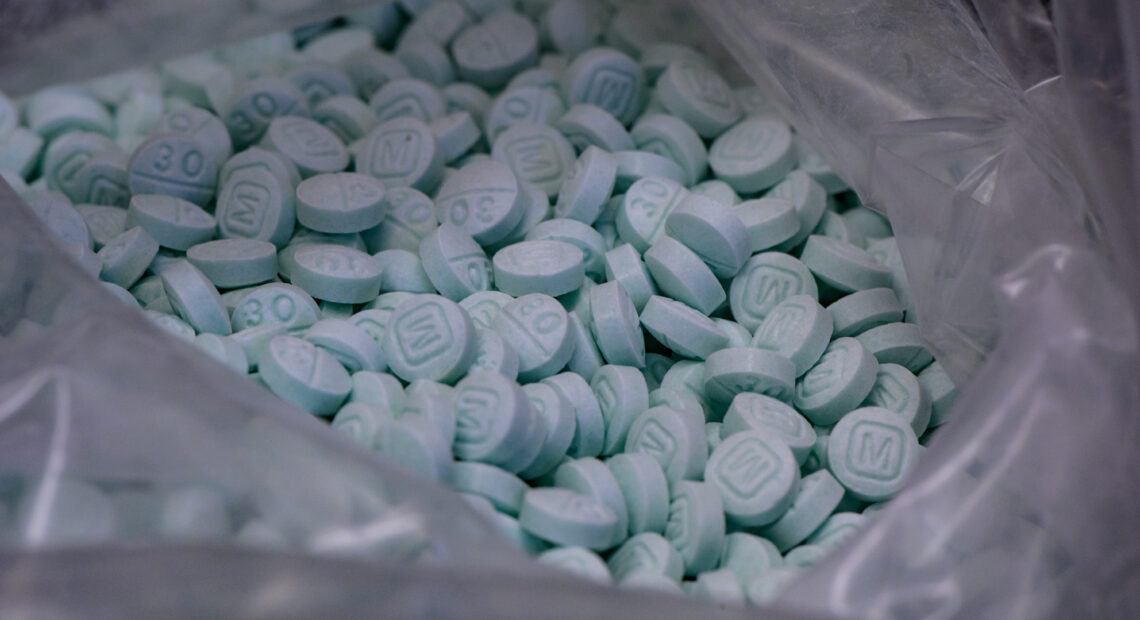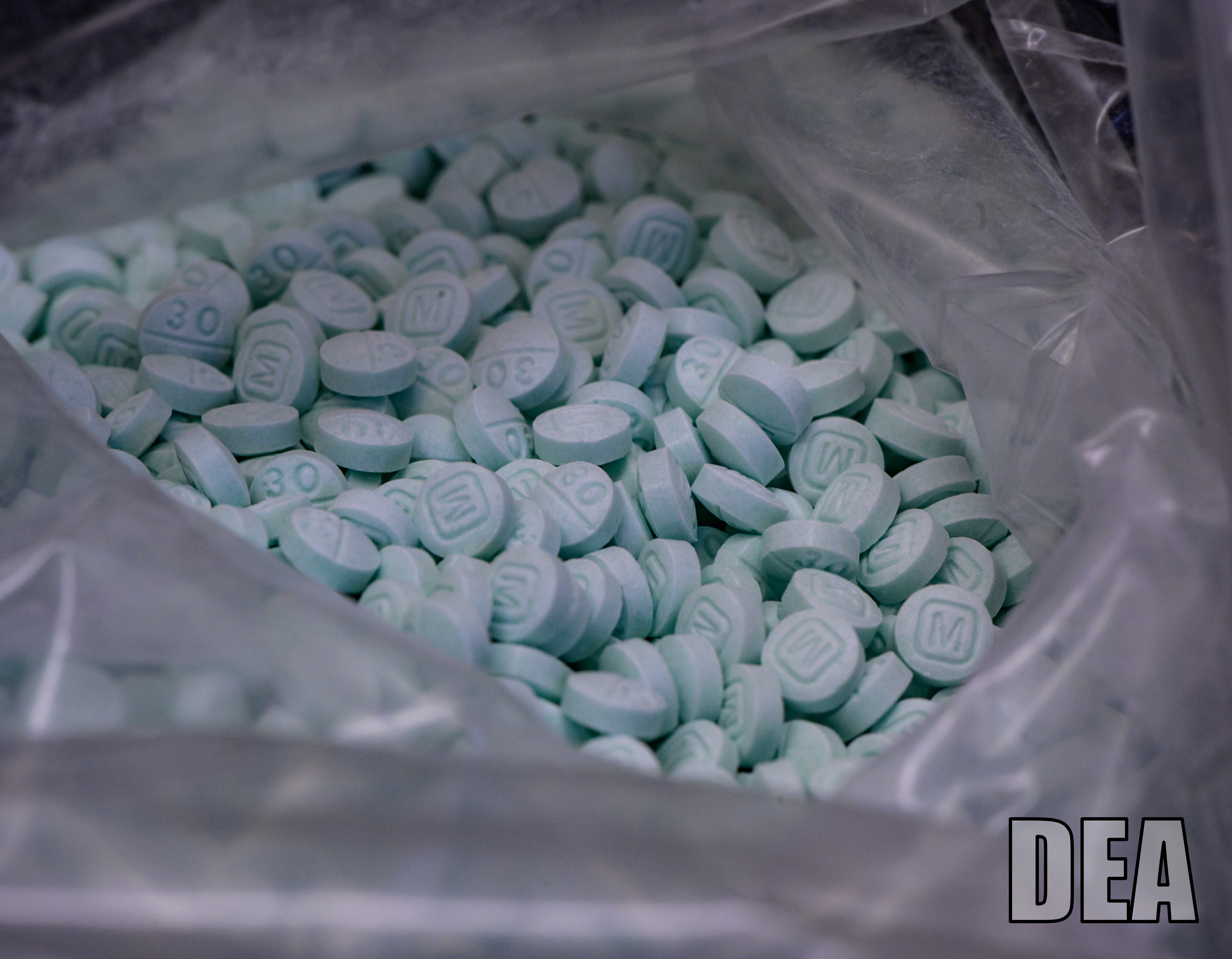
Idaho’s fight against fentanyl
Listen
(Runtime 3:27)
Read
The rate of overdose deaths in Idaho related to the synthetic opioid fentanyl roughly tripled from 2020 to 2022, according to the Idaho Department of Health and Welfare.
U.S. Attorney for Idaho Josh Hurwit said his office has been working with task forces across the state to investigate drug trafficking, using funds from the High Intensity Drug Trafficking Areas program.
“It’s coming virtually all from the southern border, and it is distributed through networks,” he said about fentanyl. “In our case in Idaho, you can track it through our highway systems.”
Fentanyl isn’t just an Idaho problem, Hurwit said.
“What we’re doing is redoubling our efforts to, at the federal level, find the drug traffickers,” he said. “So getting down even to the cartels across the Mexican border that are ultimately responsible for manufacturing.”
The state also invested in a public information campaign to raise awareness about fentanyl, called “Fentanyl Takes All.” The campaign shares startling statistics including the fact that six in 10 fentanyl pills contain a potentially lethal dose, and that the drug is 50 times more potent than heroin.
A major focus for that campaign is to raise awareness about the drug among children and young adults.
“The dealers are targeting students,” Hurwit said. “Even in middle schools.”
Social media, he said, is a common tool used to market drugs to children.
“Drug dealers are reaching out proactively to young people trying to sell them fentanyl and other drugs,” he said. “Guardians, parents, grandparents, aunts, uncles, teachers, need to be aware of that.”
Denise Davis-Miller is a recovery coach at the Latah Recovery Center in Moscow. She also has children she talks to about drug use, she said.
“They’re very honest with me about what they face at school, with these kinds of things,” she said. “Literally being asked if they want to do drugs or to vape. It’s here.”
Though law enforcement is working to crack down on drug traffickers, and state agencies are working to increase awareness, experts say those are only a few pieces to a much larger puzzle.
One challenge Idaho recovery centers have faced in recent months has been a provision in House Bill 350, passed this year, which limited the state’s distribution of the opioid reversal drug, Naloxone, known by the brand name Narcan, to first responders.
The Latah Recovery Center still has Naloxone — many recovery centers stocked up before the new law went into effect, and have since found other sources to distribute to the public, said Shaun Hogan, another recovery coach.
DHW has directed centers to the nonprofit Direct Relief, which provides free Naloxone to some organizations, as well as options to purchase Naloxone directly from the manufacturer and some nonprofits at a reduced cost. In an email, the department also noted that some centers may access Naloxone from local health departments that purchased Naloxone using opioid settlement funds, or get expired Naloxone, which is still effective, from local police departments.
Representatives from the Department of Health and Welfare have said they hope to recommend Naloxone distribution by the end of the year, following negotiations with first responders. For now, the opioid reversal drug is harder to access, especially for Idaho residents who don’t have a nearby location stocking it for free.
“That first few minutes can make such a crucial difference,” Hogan said. “Some of the rural communities, the response time is long enough that if you’re not breathing, you may not be alive by the time first responders are on the scene.”
Part of Davis-Miller’s job at the recovery center, she said, is building relationships with people who use drugs and opening an avenue for them to pursue recovery.
“People come in here to utilize harm reduction that we offer, and that’s a lot of different things along, of course, with the Narcan. We’re getting to meet them, we’re getting to talk to them, and building relationships with them and if it’s sometime further in the future, they would like to come talk to us about going a different route, we’re here for them.”
Recovery and addiction experts will often repeat the phrase, “there’s no silver bullet” when asked about solutions to the opioid crisis. The reason for fentanyl’s explosion in popularity, said Darrell Keim, director of the Latah Recovery Center, is because of its cheap cost — sometimes cents per pill.
Without addressing the root causes, Keim said, people will still use other drugs if one becomes unavailable.
“Fighting drugs is like pushing down on a balloon,” he said. “When you push down on one side of a balloon, the other side pops up. Fighting drugs isn’t fighting the drug problem.”
Parts of the solution, Hogan said, include access to harm reduction and peer coaching. Norma Jaeger, director of Recovery Idaho, said another is low-barrier treatment option is medication-assisted treatment.
Many people have a misconception that they won’t be affected by drug addiction, Hogan said. But it affects, and kills, people from all walks of life.
“It’s not just the individual under the bridge,” he said. “It’s the athlete whose prescription has run out and they’re still dependent on opiates. It’s the mom who had surgery.”
















